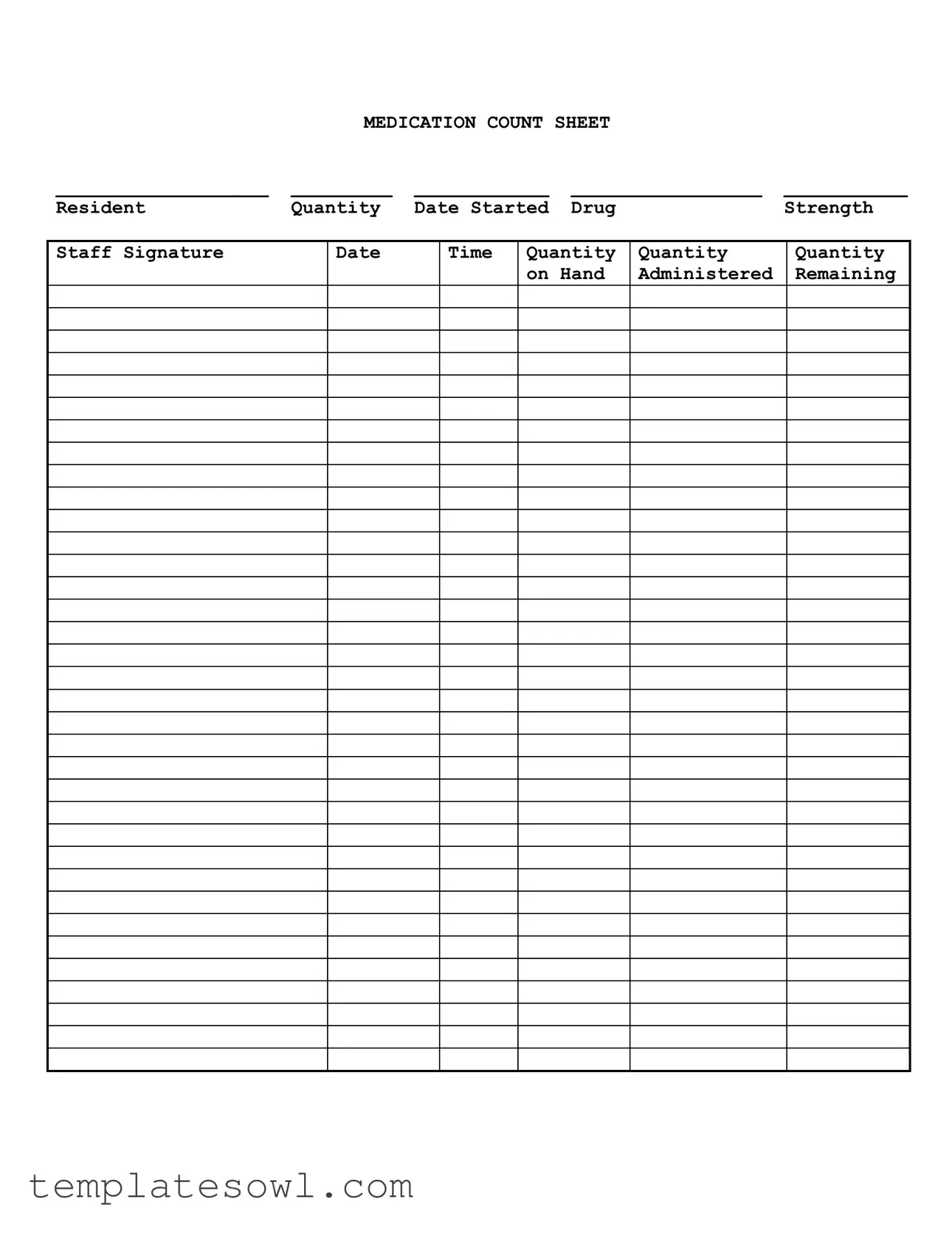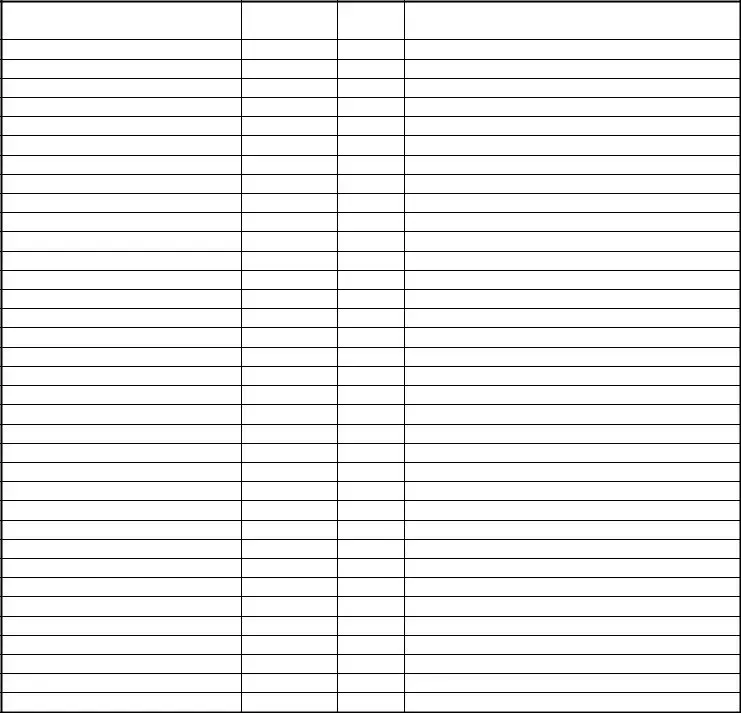What is the purpose of the Medication Count Sheet?
The Medication Count Sheet is a vital tool used to track and manage medication for residents. It helps ensure that every dose is administered accurately and assists in maintaining an accurate inventory of medications. This transparency is essential for both patient safety and compliance with health regulations.
What information is required on the sheet?
Each Medication Count Sheet must include the resident's identification, the quantity of medication, the date the medication was started, the drug's strength, staff signatures, along with timing details for when medications are administered. Additionally, it tracks quantities on hand, administered, and remaining, creating a full picture of medication usage.
How often should the Medication Count Sheet be updated?
It should be updated each time medication is administered. This practice ensures real-time accuracy and helps prevent discrepancies between what is recorded and what is physically available.
Who is responsible for completing the Medication Count Sheet?
The responsibility typically falls on the licensed staff administering the medication. However, all staff should be trained to understand the sheet's importance and maintain accurate records.
What happens if there is a discrepancy in the medication count?
If discrepancies arise, they must be promptly investigated. Document any missing medications and report the findings to the appropriate supervisor. Steps should be taken to ascertain how the discrepancy occurred and to improve processes to prevent future issues.
Is there a need for signatures on the Medication Count Sheet?
Yes, signatures are essential. They provide accountability and help create a clear audit trail. Staff signatures indicate that the medication was both administered and recorded correctly.
How should the Medication Count Sheet be stored?
These sheets should be stored securely in a way that protects the confidentiality of resident information. Accessible only to authorized personnel, they play a critical role in medication management.
What should I do if the Medication Count Sheet is lost or damaged?
If a sheet is lost or damaged, notify a supervisor immediately. Recreate the information to the best of your ability, noting any gaps. This recordkeeping is crucial for maintaining accountability and ensuring residents receive their medications as prescribed.
Can the Medication Count Sheet be updated electronically?
Yes, if your facility employs electronic health records (EHR), the Medication Count Sheet can be integrated into that system. Electronic updates can provide an efficient and reliable means of tracking medication, as long as strict data privacy measures are followed.

